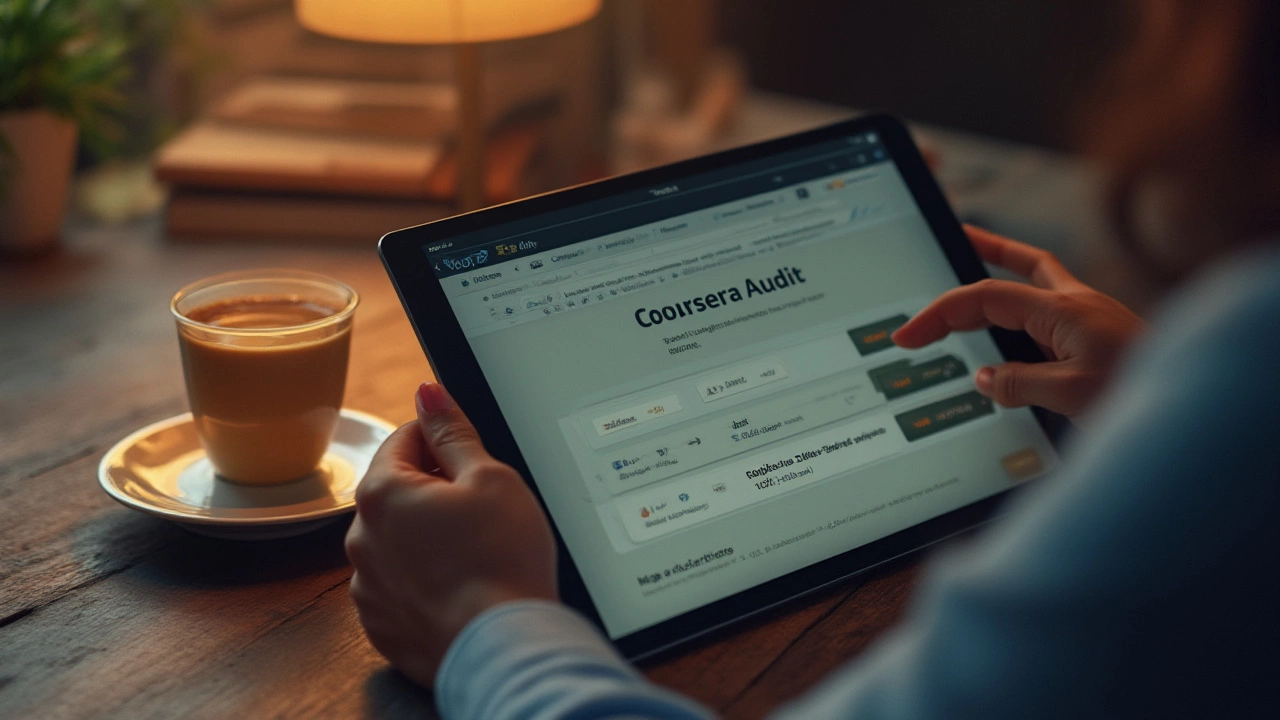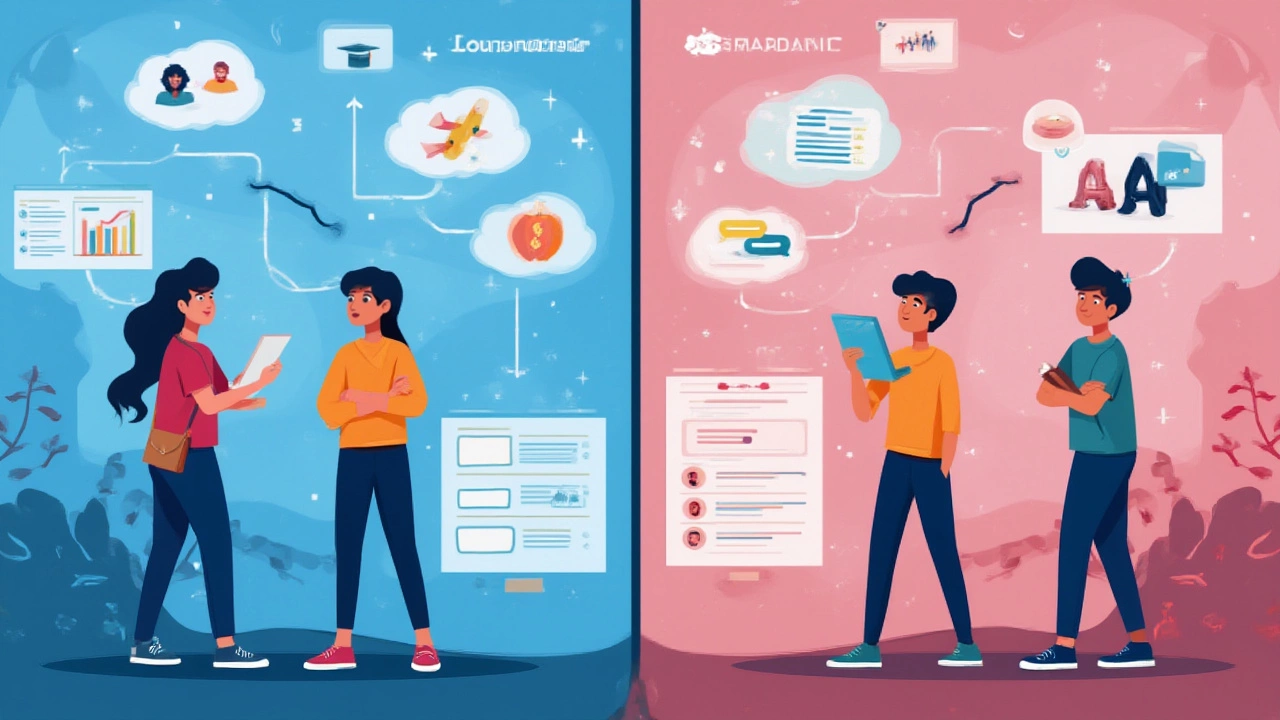Type “Coursera free” into Google today and you’ll find a boatload of confusion. Is Coursera still free, or has that ship sailed away with the days of free bagged milk and floppy disks? If you’ve lurked on forums or tried signing up since early 2021, you’ve probably gotten more mixed messages than a Saturday morning infomercial. Some folks say it’s all paywalled now; others claim there’s a secret loophole or a scrolling menu that magically reveals free classes if you squint just right. The truth sits somewhere in between, but it’s less mysterious—and more strategic—than you might expect.
How Coursera’s Free Model Has Changed
Let’s not sugarcoat it: Coursera burst onto the scene over a decade ago with thousands of free courses from top universities. Back then, anyone could sign up, binge-learn machine learning, Greek philosophy, or even cryptography—without paying a cent. That wild west of free learning hit its peak during the early days of the pandemic, when Coursera swung open the doors wider. In April 2020, they handed out free certificates as if they were lollies at a local Australian footy match. By June 2020, over 21 million people had taken a free Coursera class.
This was never meant to last forever. Once the surge of COVID shutdowns began to ease, the platform’s free-for-all approach shrank. By 2022, new limits appeared. Free certificates? Gone, unless you happened to snag an official government or university promotion. Full access for every class? Only if you paid up front or used the lesser-known “audit” option.
Fast-forward to 2025, and the landscape looks sharper. Coursera remains generous compared to many rivals, but unrestricted free learning isn’t their main pitch. While they still flash “free” on hundreds of courses, there’s always an asterisk: free to learn, not to earn that certificate you can add to your LinkedIn. And some specializations or project-based classes now block hefty chunks of content behind a paywall—lectures might be open, but graded assignments and feedback? That's subscriber-only territory.
Real talk: most people now access Coursera’s free classes through the “audit” option. If you’re obsessively after a fancy bit of paper, you’ll have to reach for your wallet. If all you want is to learn (and you don’t mind jotting notes old-school in a notebook), there are ways in. The game simply changed from “everything free, always,” to “plenty’s still free—as long as you know which buttons to click.”
How to Actually Find and Use Free Courses on Coursera in 2025
Here’s the reality: Coursera’s homepage loves to advertise both free and paid options. Scroll down the course listings and you’ll see tempting gold “Enroll for Free” buttons. “What does that even mean now?” you might ask. Most of these lead you to a sign-up funnel where you’ll be gently steered toward a seven-day free trial—after which they’ll charge your credit card unless you remember to cancel. This confuses more people than it should.
The true freebie magic still exists, but it’s a bit hidden, especially if you’re on a mobile device. For regular learners who don’t want bells and whistles—or to sweat about credit card details—look for the “Audit the course” option. Normally, you’ll spot a tiny “audit” link at the bottom of the pop-up window when you’re signing up, right below the big blue trial button. It’s annoyingly subtle, but that’s intentional. Audit lets you access all the course videos, readings, and basic discussion boards, totally free. You don’t get graded assignments marked, and you definitely won’t get a certificate. Still, for most, it’s a massive amount of content completely on the house.
Here’s a tip for desktop users: Most full-length university courses (like Yale’s Science of Well-Being, still Coursera’s most popular class of all time in 2025) allow free audits. But some professional certificates, collaborative specializations, and hands-on projects won’t. If you can’t see the “audit” option, try opening the course’s main page, scroll down and look for “audit only”—even if it’s buried. Recently, Coursera made it even trickier, so poking around in the course info FAQ sometimes reveals new free paths.
Platform UI varies slightly depending on where you live (I get the Aussie version, mate), but the basic structure holds everywhere. Don't let “Start Free Trial” fool you. If you only want to view lectures, never punch in your payment details. One more cheeky hack: open a private browser window, clear cache, and re-search the same course. Sometimes courses offer occasional, hidden free seats—especially in the weeks leading up to university terms in the northern hemisphere. No guarantees, but worth a try.
Check out this quick table comparing current Coursera free vs paid access:
| Feature | Audit (Free) | Paid/Certificate |
|---|---|---|
| Video Lectures | Yes | Yes |
| Readings | Yes | Yes |
| Graded Assignments | No | Yes |
| Certificate | No | Yes |
| Peer/Mentor Feedback | No | Yes |
| Access to Projects | Sometimes | Yes |
Not sure what to try first? The free “audit” path is best for theory-heavy university courses (like intro mathematics, history, or computer science). Less luck with hands-on things or professional endorsements. Always check the fine print on the course page before you get started and avoid using an email you don’t want to get promo emails on.

Where Hidden Costs Sneak In: Certificates and Assignments
You’re halfway through a Princeton economics class, you’ve taken notes, maybe even bragged about it to your mates. Suddenly, the “Submit for grading” button goes grey. You’ve hit the Coursera paywall—harder to spot if you’re new. Here’s why. Coursera’s main business is selling completion certificates (not access to knowledge per se). As of July 2025, a basic course certificate costs between $59 and $89 AUD. Specializations and professional certificates (multi-course programs) can run north of $2,000 AUD.
What freaks people out is Coursera’s seamless switch from free browsing to paid grading. You might audit a whole unit, get swept up in the videos, but as soon as peer-graded or auto-graded assignments pop up, you’ll see a prompt asking you to “Upgrade.” Some people fork out the cash at this point, but you can easily keep learning most of the content for zip—just ditch the hope of earning a badge for your LinkedIn or résumé.
If you really need that certificate but don’t want to pay top dollar, a few hacks do exist—though they’re not certain. Coursera still offers financial aid to people who fill out a pretty detailed application form. This can take a week or two to process, sometimes less for highly demanded courses. Not everyone qualifies, but if you can clearly explain your circumstances, your chances go up. Remember, unreliable “free certificate” hacks shared on random YouTube channels don’t work anymore. Stick to the real aid application linked from the course payment page.
Also, Australians can sometimes find course discount codes through state libraries or university partners, especially if you’re a current student or unemployed. Your local council career advisor might even have info on new pilot partnerships. Not widely known, but definitely worth exploring if you want the full kit without draining your bank account.
Lastly, organisations occasionally secure bulk free licenses during special campaigns. For instance, in early 2024, the University of Adelaide offered free Coursera for faculty and postgrads for three months—nobody knew until it was almost over. So keep your eyes open for these “golden ticket” moments, especially around semester breaks or major skill initiatives.
Comparing Coursera to Other "Free" Learning Platforms
Is Coursera the only game in town for free learning? Not even close. Yet, it’s very much in the mix if you want serious university-backed content and don’t mind the certificate limitations. How does it stack up right now against its rivals?
Udemy, for instance, pepper their catalogue with hundreds of proper free courses, but the big stuff—Google’s official certificates, Microsoft-linked coding bootcamps—are pay-to-play. Udemy lacks the prestige of Coursera’s Ivy League tie-ins and often doesn’t update their free offerings as regularly.
edX comes closest to the classic Coursera model. You’ll see “audit” options (sometimes front and center), but their system also hides assignment grading and certificates unless you purchase. edX seems more transparent about what’s free, and you might get limited-time access to bonus features, especially if you sign up with a .edu.au email. Still, the vibe is much the same: video lectures, readings, quizzes and discussions for free, but official proof costs money.
Khan Academy keeps everything free, but their subject range tapers off at undergraduate level—not much if you want specialised professional skills. FutureLearn and OpenLearn (both UK based) offer a good number of legit, always free courses, especially around humanities and social sciences. Their higher-level or vocational content, though, usually asks for payment too if you want a certificate.
Here’s a quick snapshot of the major platforms in mid-2025:
| Platform | Free Course Access | Free Certificates | Professional/Uni Endorsements |
|---|---|---|---|
| Coursera | Most (audit) | No | Yes |
| edX | Most (audit) | No | Yes |
| Udemy | Some | Rare | Limited |
| Khan Academy | All | Not formal | No |
| FutureLearn | Most short courses | Sometimes trial only | Some |
Bottom line: Coursera still has the broadest range of top-ranked university courses available in Australia (and globally) for free auditing. But if your priority is something you can print out and slap on your office corkboard, you’ll have to look elsewhere or accept the fee—for now.

Tips to Make the Most of Coursera for Free in 2025
If you’re trying to outsmart Coursera’s latest pricing puzzles without tripping over hidden fees, a few tricks go a long way. First, always hunt for the Coursera free courses audit option before starting any class, especially if you just want the skill, not the paperwork. That “audit” link is smaller than a gnat’s whisker for a reason, so scroll slowly. If you don’t see audit, try the course from a different device or clear your browser cache—it actually works sometimes.
Don’t let fear of missing assignments deter you. Most good university courses on Coursera are designed so you can follow along with lecture quizzes, self-check exercises, and even join most discussions without paying. Create your own system for feedback by teaming up with a study buddy—or, if you're stuck on a question, hit Reddit’s r/Coursera group or learn-centric Discord servers. No shame in crowdsourcing feedback, since you’re not paying for official grading anyway.
Bookmark updates. Every few months, Coursera adds new ways to access content (or quietly retires old ones). Subscribing to Coursera’s free email updates or partner university newsletters helps you catch free offers before they’re over. For Australians, keep an eye out for announcements from the Australian Government Skills Portal: in May 2025, they dropped a batch of discounted Coursera vouchers for people reskilling into IT, sparked by ongoing digital skills shortages.
Check local public libraries and TAFE partnerships. More branches now offer members sponsored Coursera memberships. No need to be a current student—just ask at the service desk or search the library’s digital learning page. These free memberships sometimes include certificate access, which is a bargain nobody expects.
If you’re chasing professional development, always compare Coursera audit access with similar content on edX and FutureLearn. Sometimes you’ll find a course by the same instructor on multiple platforms, with slightly different content locked or unlocked. Gathering materials from both spots can round out your understanding for free, even if you can’t combine the certificates.
Don’t waste time on outdated “100% free” lists from 2021—that era is gone. Instead, search by course name and check the latest student reviews on the Coursera discussion forums. Fellow learners are quick to report when audit options vanish, or when new hidden free deals show up. If you want actual university credits, contact the online learning team at your preferred uni—sometimes they’ll let you transfer audit-completed courses to uni credit with a pass/fail exam, though this varies wildly by campus (it’s worth an email anyway).
One secret weapon: Coursera Plus free trials. Even though this is usually a paid feature, every so often (especially during back-to-school in September or January) Coursera drops week-long or even month-long free Coursera Plus trials. You can binge as many paid courses as you want in that window—just set a calendar reminder to cancel before charges kick in. Friends in the Adelaide tech scene swear by these “free for now” periods whenever new specializations drop, especially in AI, data science, or business analytics.
In short, Coursera’s never been about free certificates; it’s a powerhouse when you’re hungry for learning but low on cash. As of July 2025, with the right eyes and a steady internet connection, you can still skill up for free—the catch is you have to know exactly where the free options hide.
